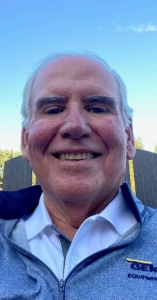That Was the Year That Was
There was a television program, I think it was back in the 1970’s or 80’s, called That Was The Week That Was. It was a British show that in Canada had the titled shortened to TW3. Being a British Show, it took the typical British tongue in cheek view of the news of the day. I want to resurrect the name with a twist. 2020 TW3 – That Was The Year That Was.
Leaving 2020 behind.
Certainly, there have been other years that carry the same feelings, family health issues or deaths, job losses and other similar difficulties in the passage of life. But I believe 2020 should win the title and the Crown, as the most, in nearly every category of significance.
We began the year with the most successful economy in American recent history. For instance, we saw the lowest income quintile see their net worth rise 37% while the top quintile held steady (Federal Reserve Survey of Consumer Finances). A tight labor market forced employers to raise wages and the minority workers, black and brown, as well as women, saw their net worth rise 10 to 20 times their white male counterparts. The economy seemed to be performing exactly as society would have wanted.
Then the Pandemic hit. “The depth and breadth of its economic disruption was greater than that of any postwar recession.” “The distribution of the job losses was completely different than what one usually sees in a downturn.” “Low-income earners were the hardest-hit group.” (WSJ 2020 in Review) This downturn affected women and people of color disproportionately. Service businesses, restaurants, barber shops, hair salons, bars, gyms, etc. were declared non-essential services, by various governments, and shut down. Many of those business will not return having already declared bankruptcy.
Then the death of George Floyd at the hands of the police brought the sight of violent riots and demonstrations to the nightly news. Society, as we knew it, was being fractured. Let us remember this is not the first time this has happened. Not by a long shot.
And of course, we had the election in November which showed a seriously split electorate. Roughly 80M versus 75M split between Democrats and Republicans for the Presidency. Significant gains by the Republicans in the House and basically a stand still (at this writing Georgia has yet to vote for the Senate) in the Senate. Thirty of the Sates are controlled by Republicans and twenty by Democrats. Pretty much a “schizophrenic” voting population.
Finally, a Vaccine. One the most amazing feats in modern medicine is the research into, development of, the actual testing regimes, and regulatory approval of vaccines to stop the spread of the Pandemic. Politically they called it “Warp” speed. Now the roll out of the vaccinations to the world is underway.
That Was the Year That Was alright. But I don’t need a repeat of this year again in my lifetime. Thank you.
Earlier in the year I read a remarkable book by George Friedman, an author for whom I have much respect, titled “The Storm Before the Calm.” It is an incredible read from a very astute author. If you haven’t read it get it, you can thank me for the suggestion later. Which brings me to my thinking today.
I believe that 2021 will be a year in which we “reset” our businesses. If we had our eyes open, we learned a lot.
- that we could have some job functions “Work From Home” a new acronym WFH. This also exposed us to a lot of office building space being superfluous to our needs.
- the critical nature of “Internet Based” Businesses. Our need for 5G internet speeds and significantly most robust security tools on our systems.
- how to conduct “Virtual Meetings” with previously unheard-of businesses like Zoom becoming a house hold name.
- how education was changed in ways that no-one had foreseen. This was a change that was necessary to happen as student debt for University education had become the largest single debt in America.
- that Companies generally have procedures in place for upskilling their workforce. Teaching employees what they need to move up in the organization, such as management skills or technical knowledge. Reskilling workers, to move them to a different role, is very different today.
- We learned how to save money. Americans have accumulated $2 Trillion in new savings since February.
And we learned that we had choices to make in our lives. Those of you that know me will understand me when I say I refuse to be a victim to what goes on around me. I am too stubborn to let that happen. I want to always find a way to make things work. Work better if at all possible. That is my belief and it has driven me my whole life and I see no reason to change at this point.
So, I would ask all of you to stand and raise your glass with me. I am going to “KICK” 2020 out this year. Much more than I am going to welcome in 2021. We are going to see a remarkable 2021. The world will start to return to normal and with a fresh optimism we are poised to do remarkable things.
The time is now.






